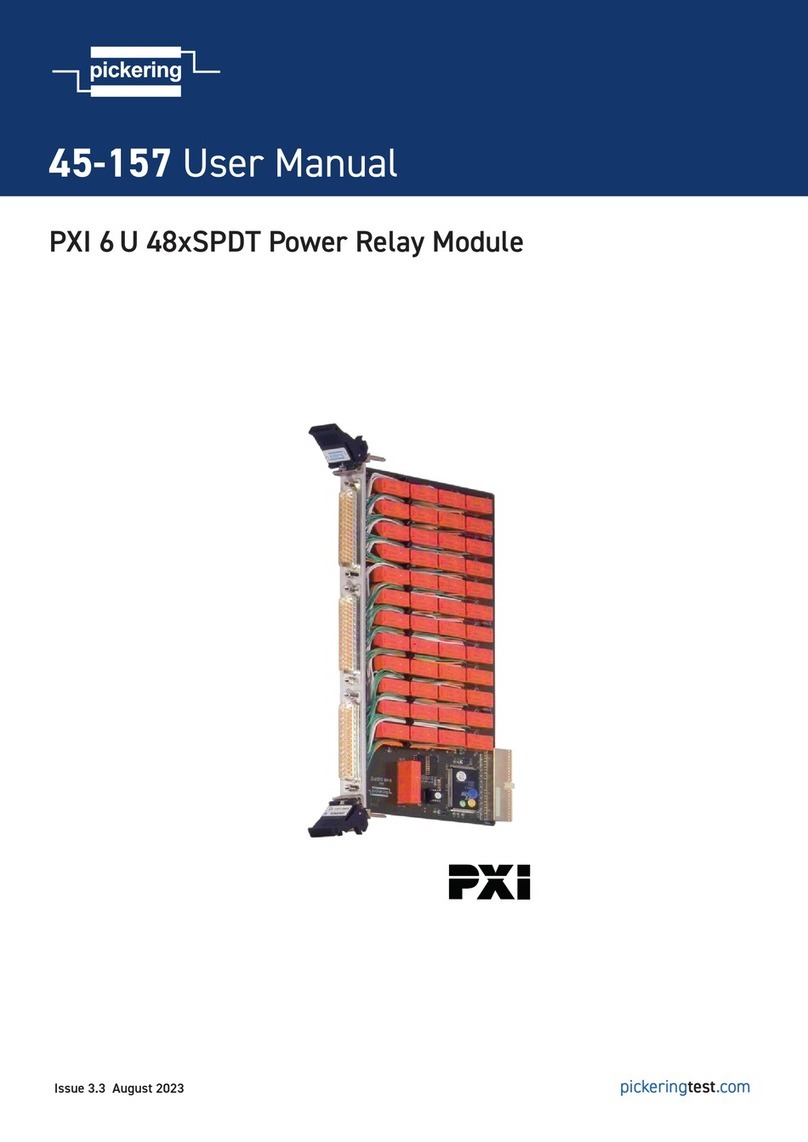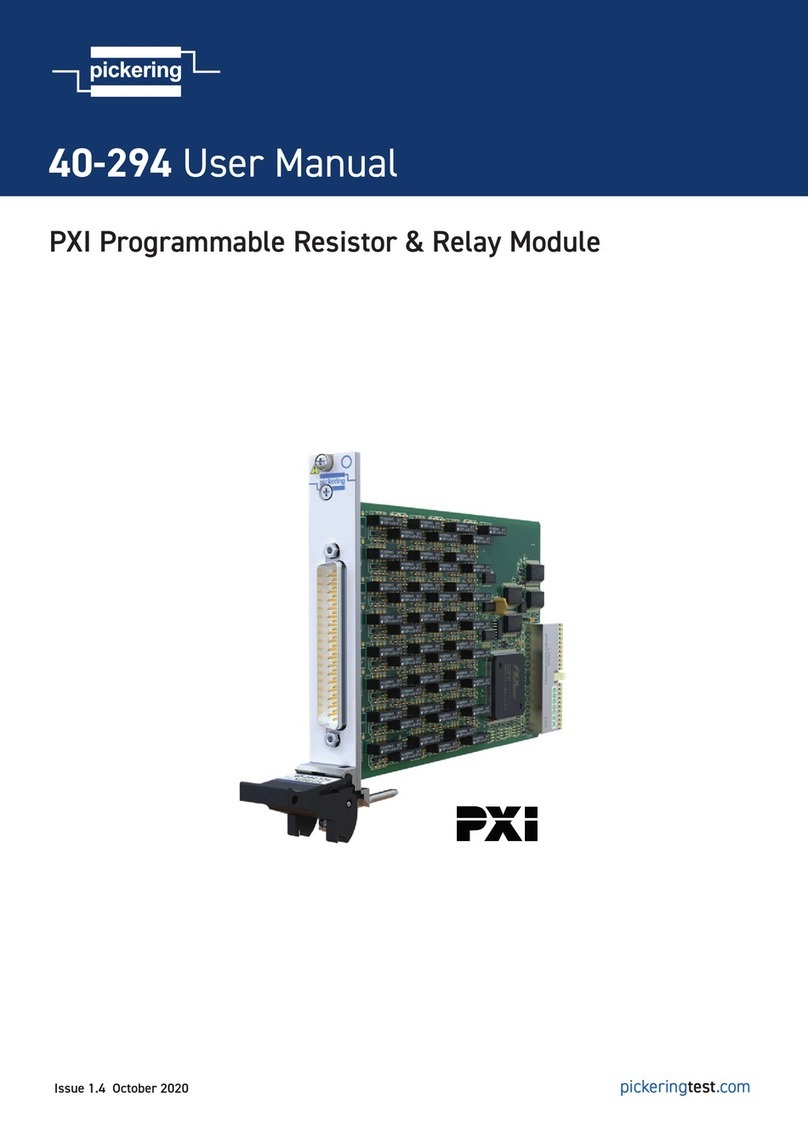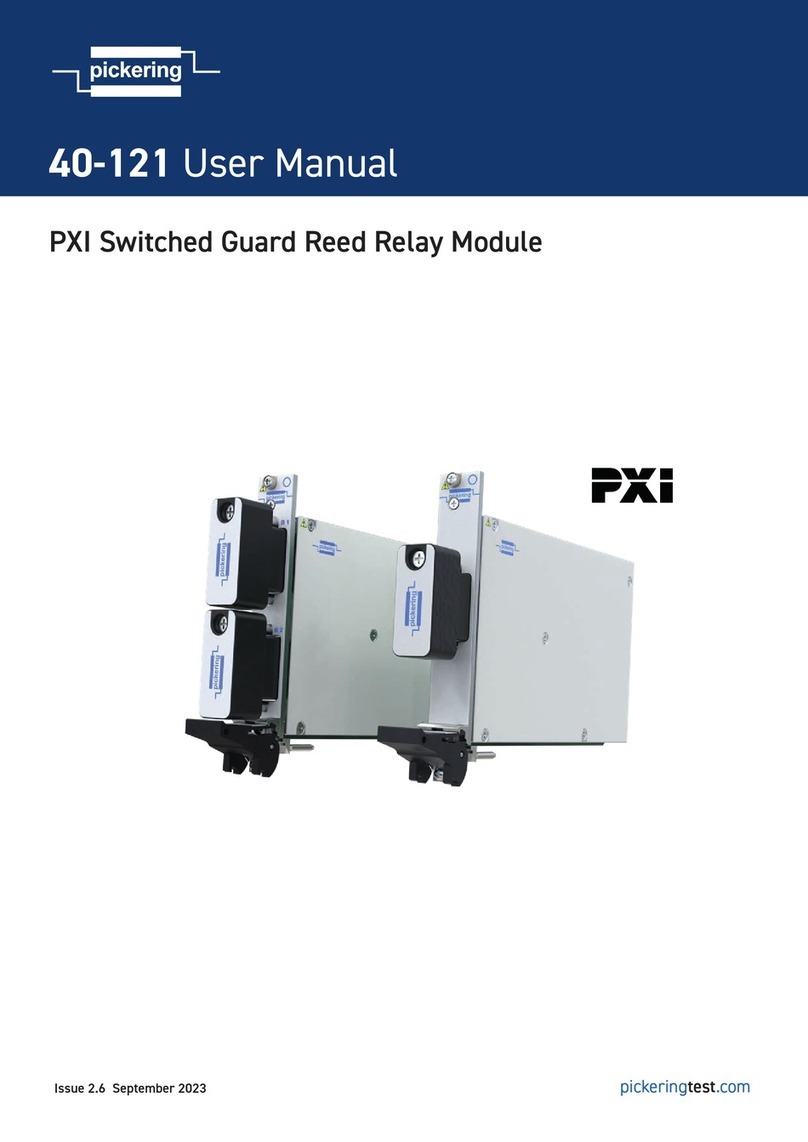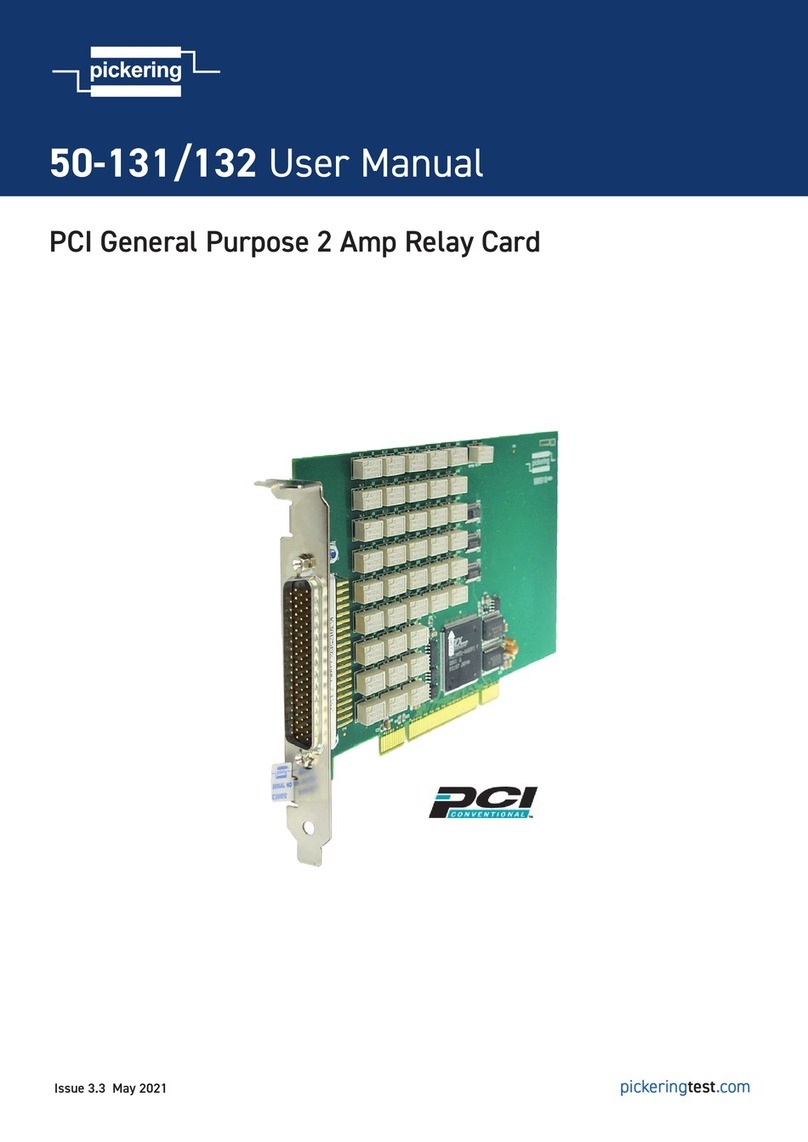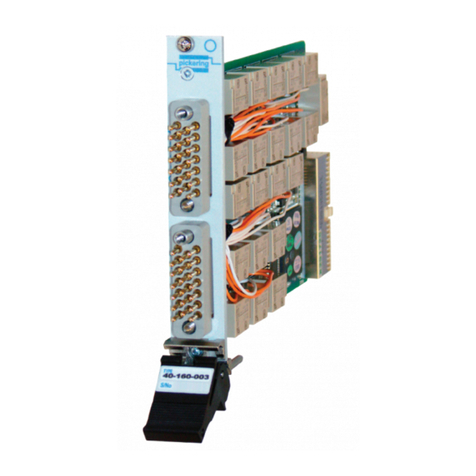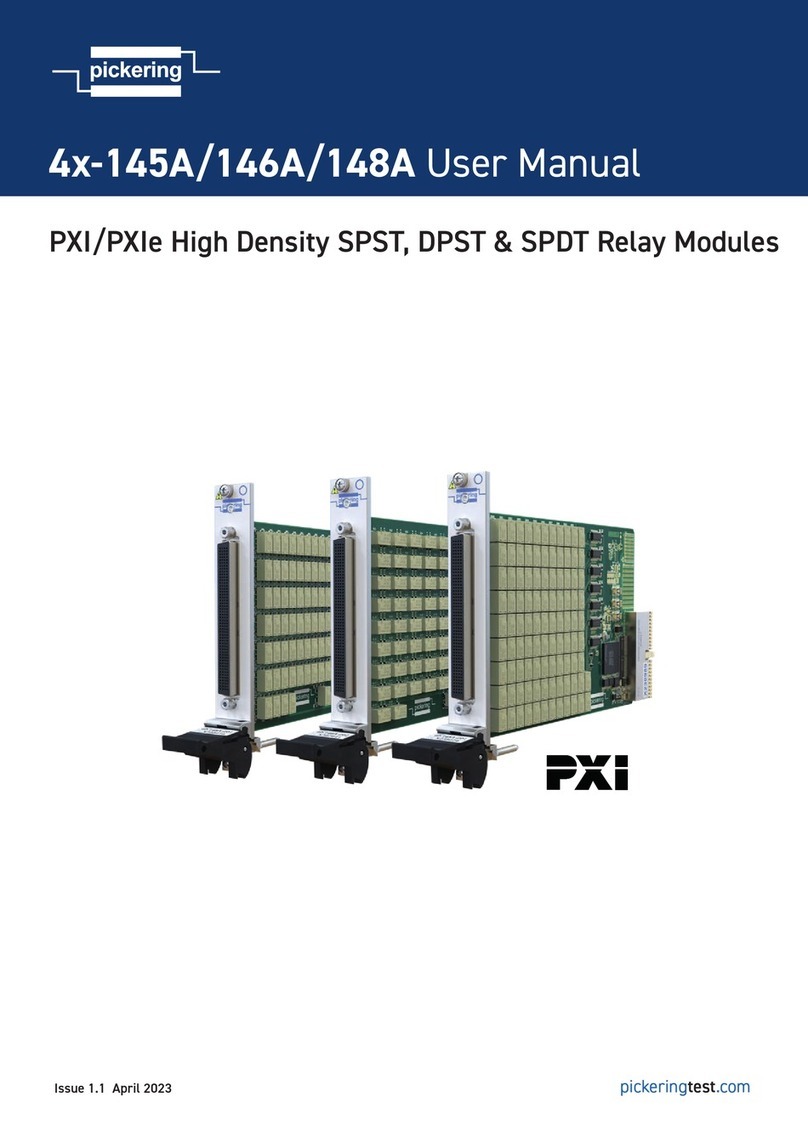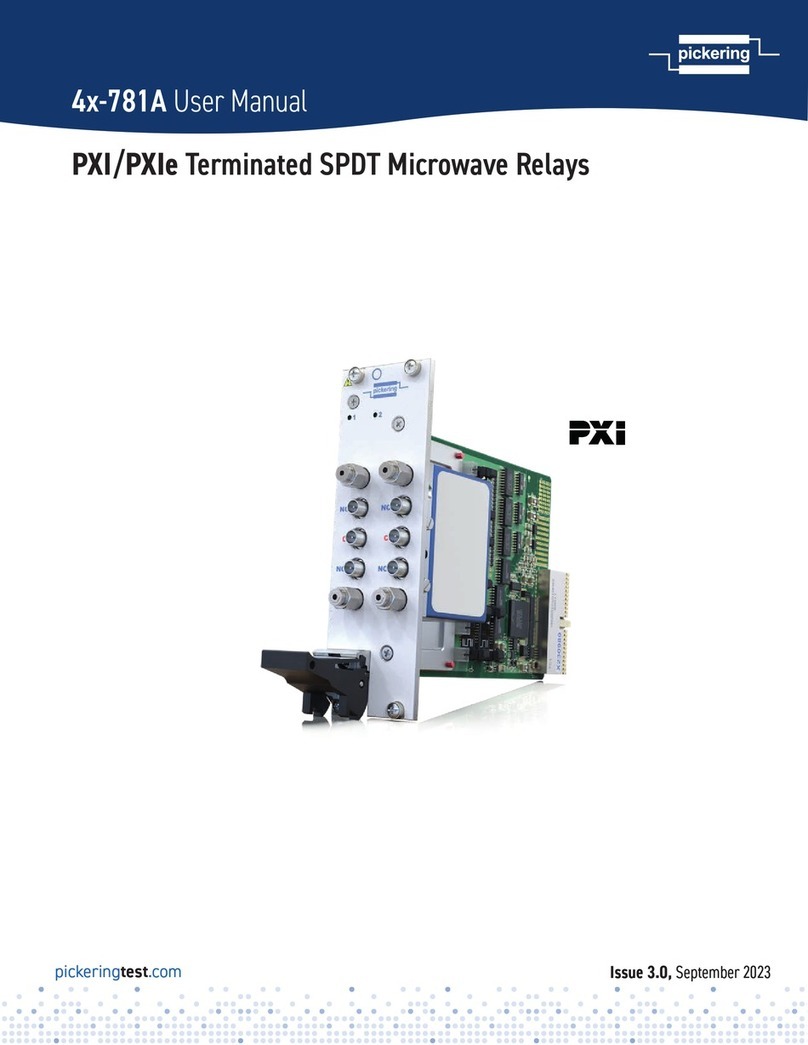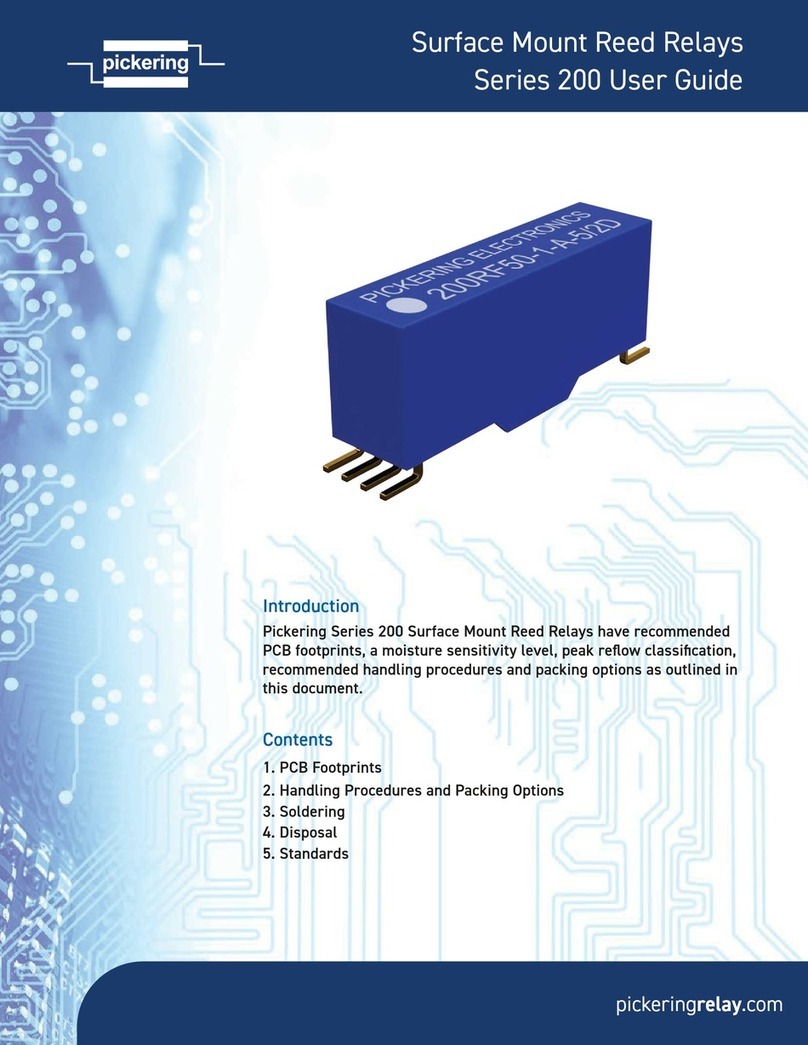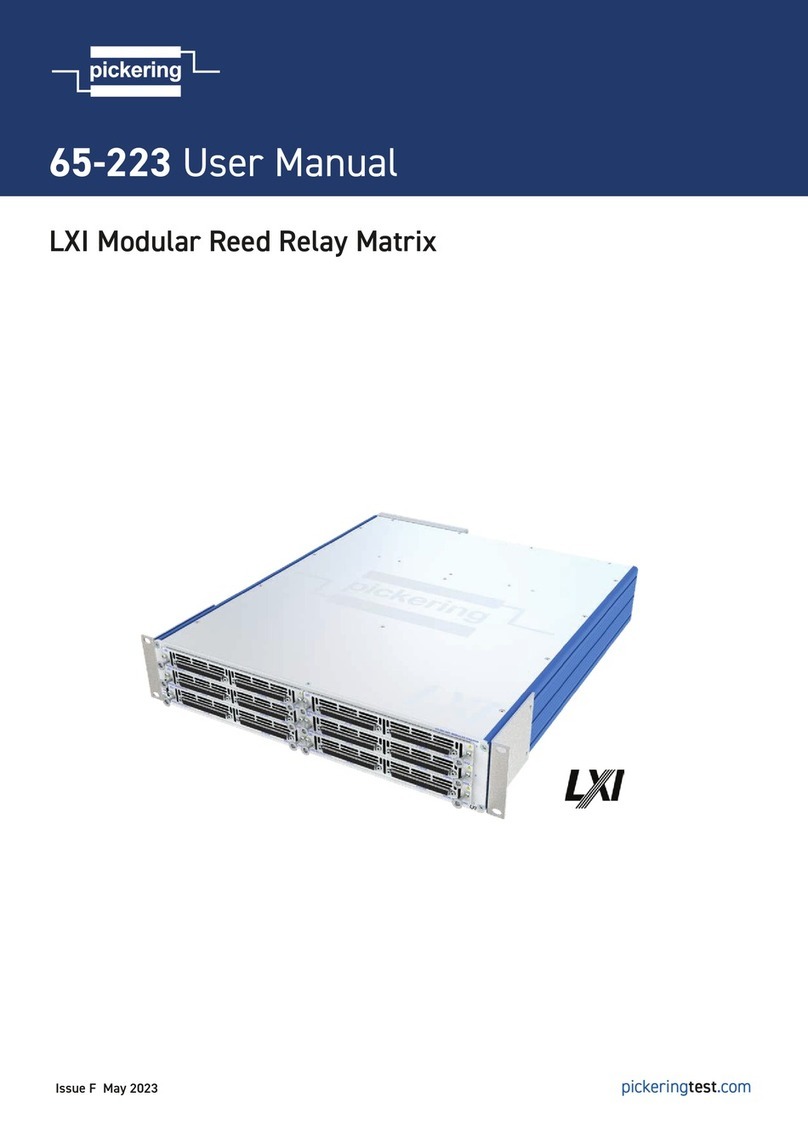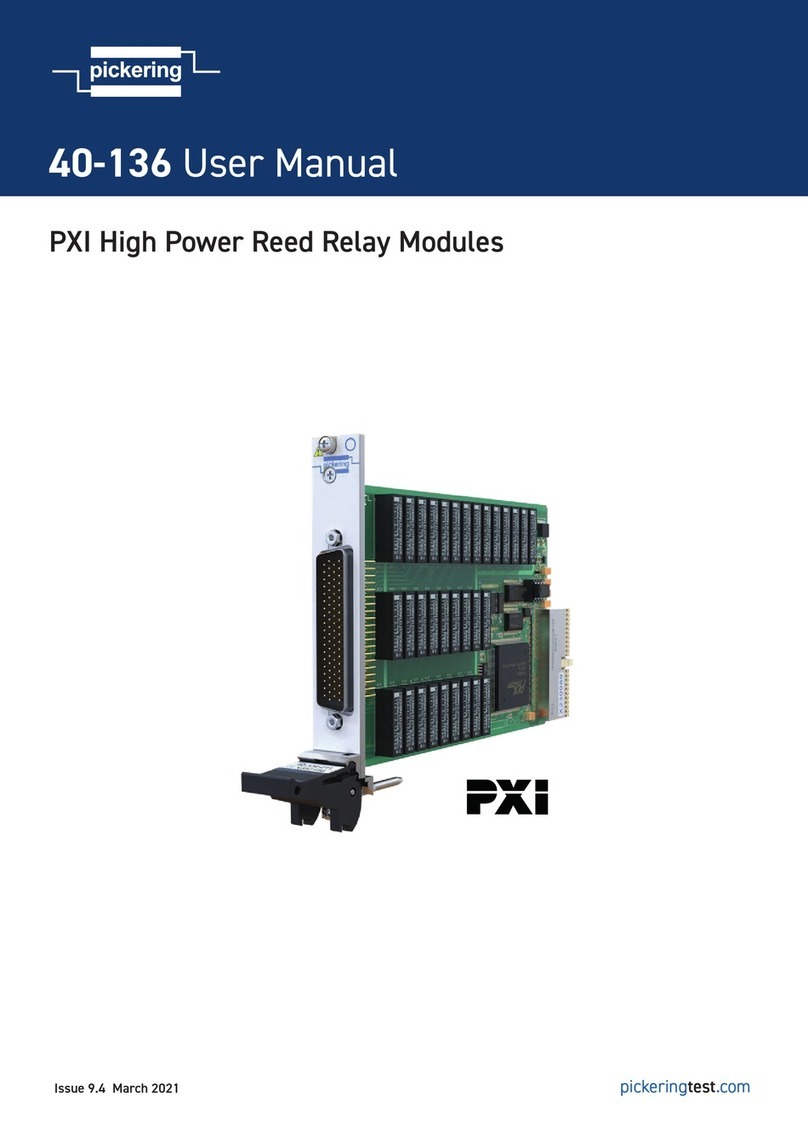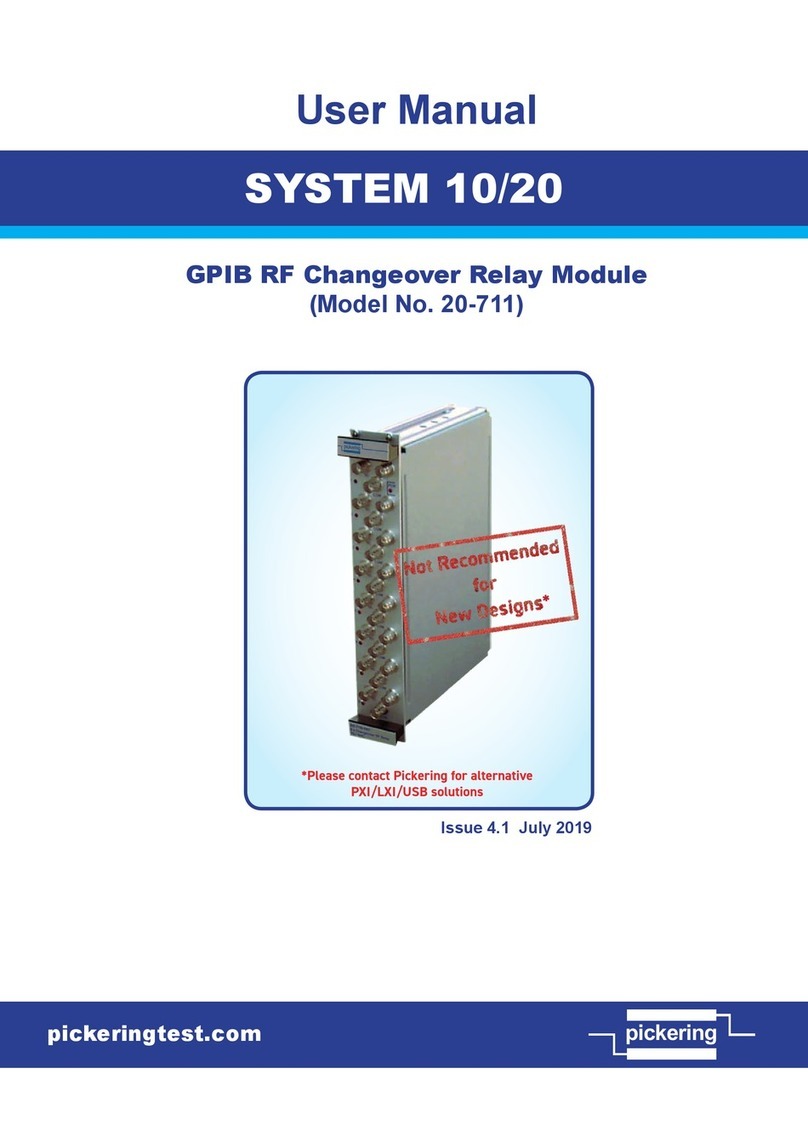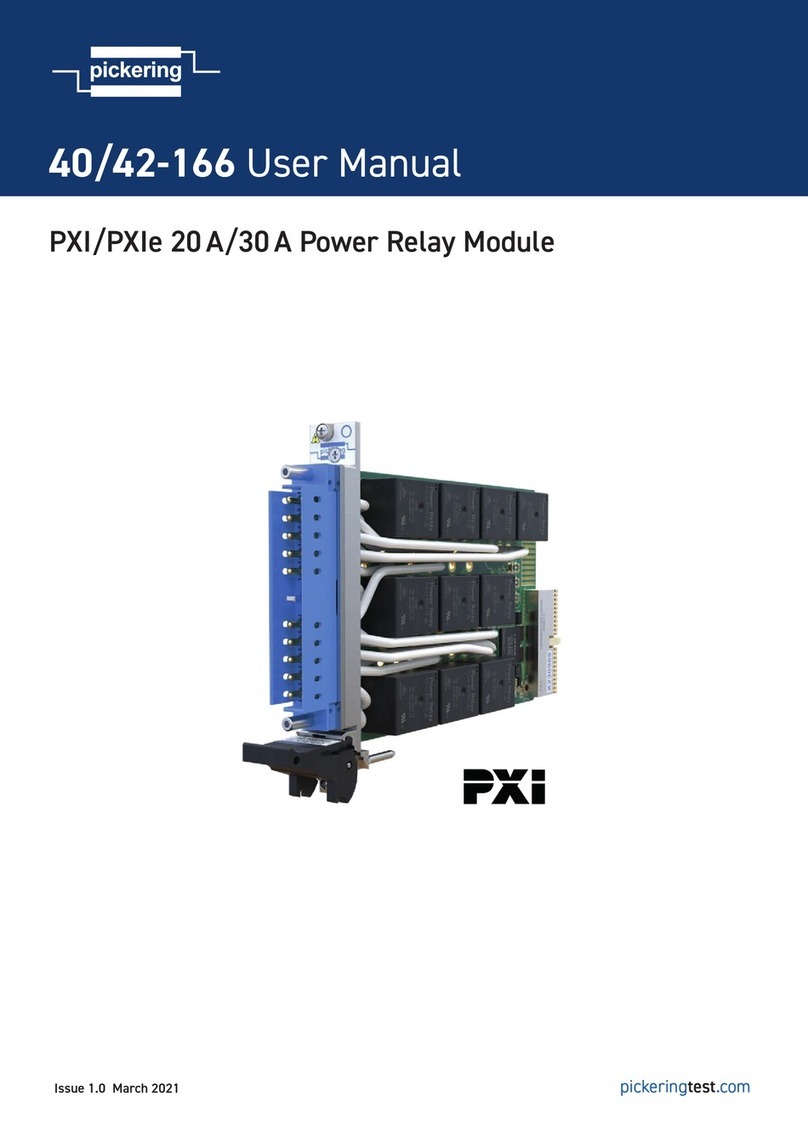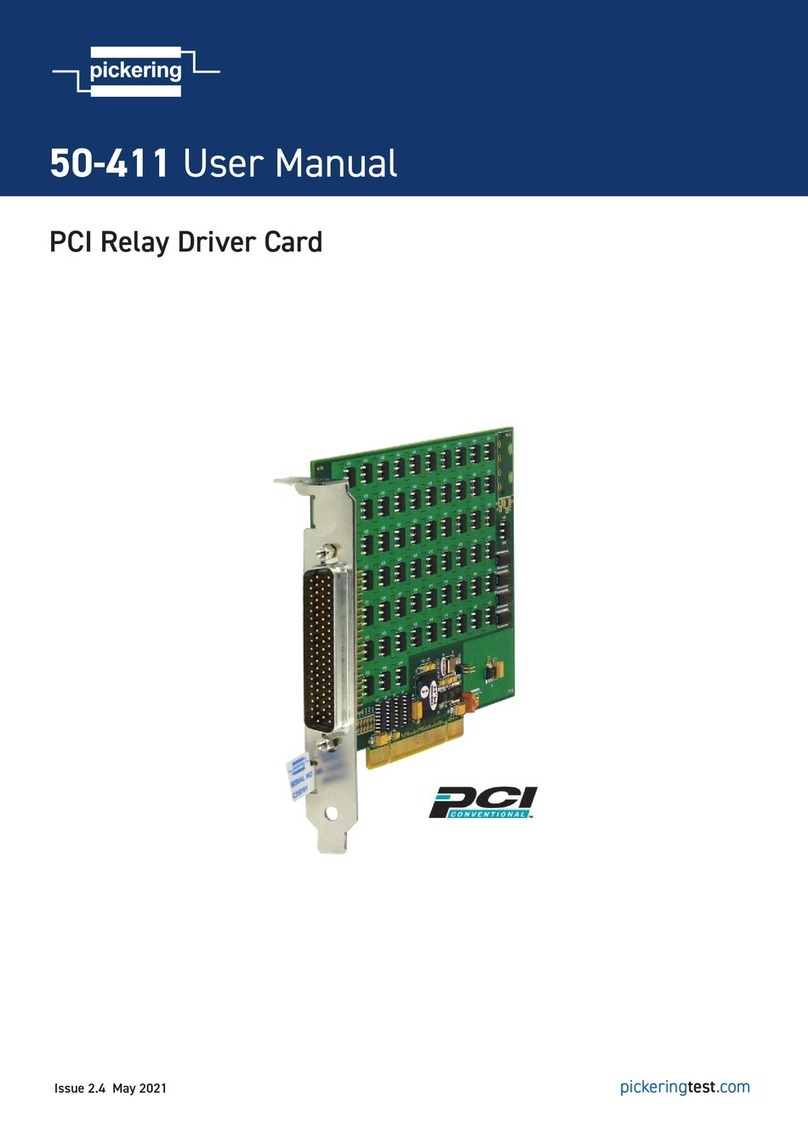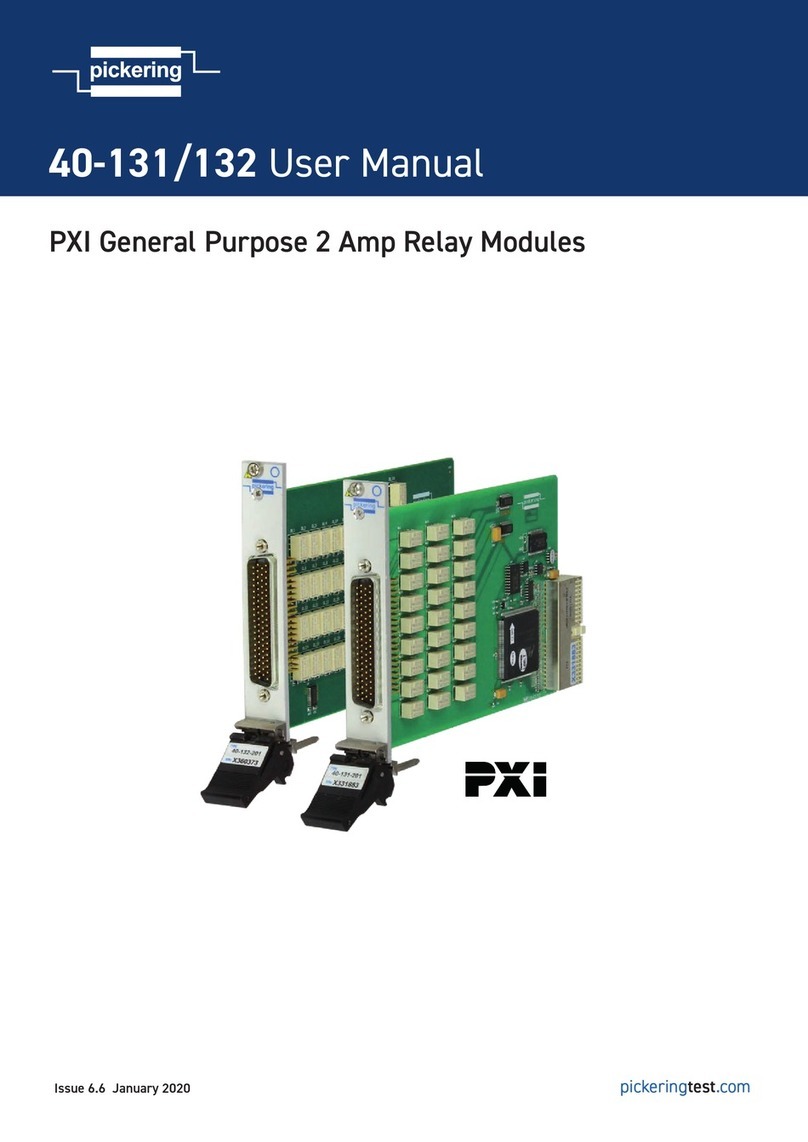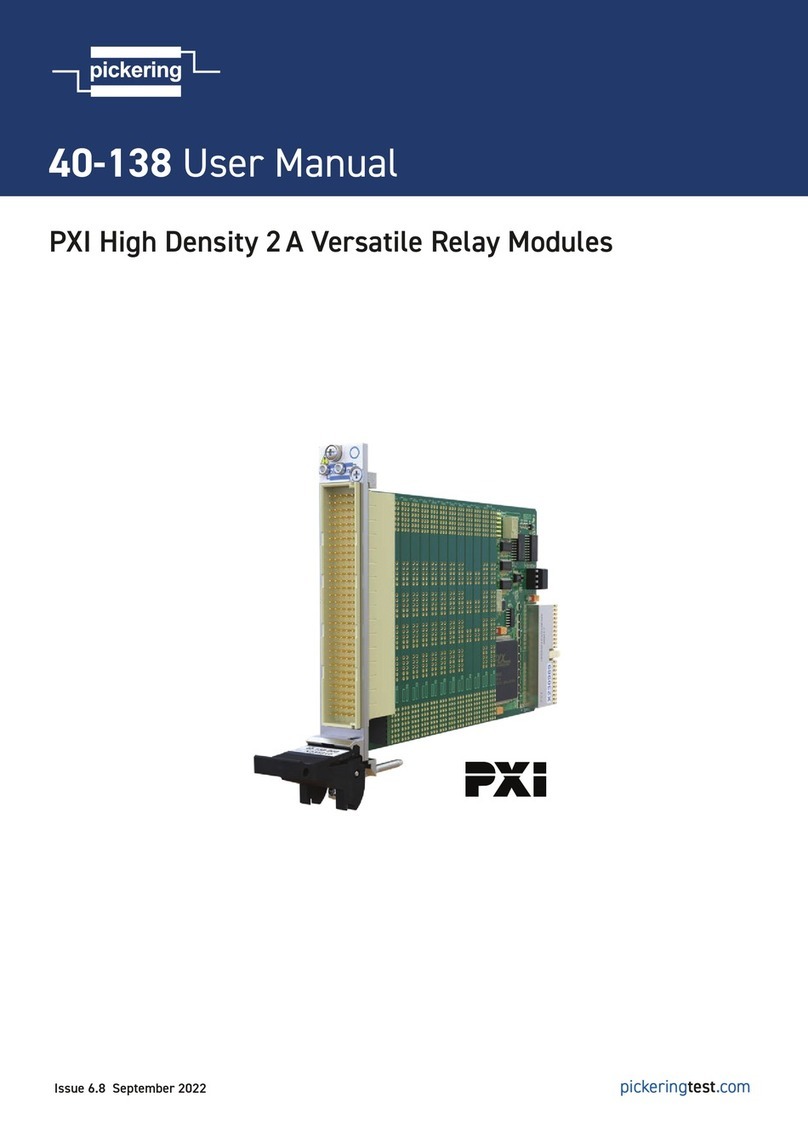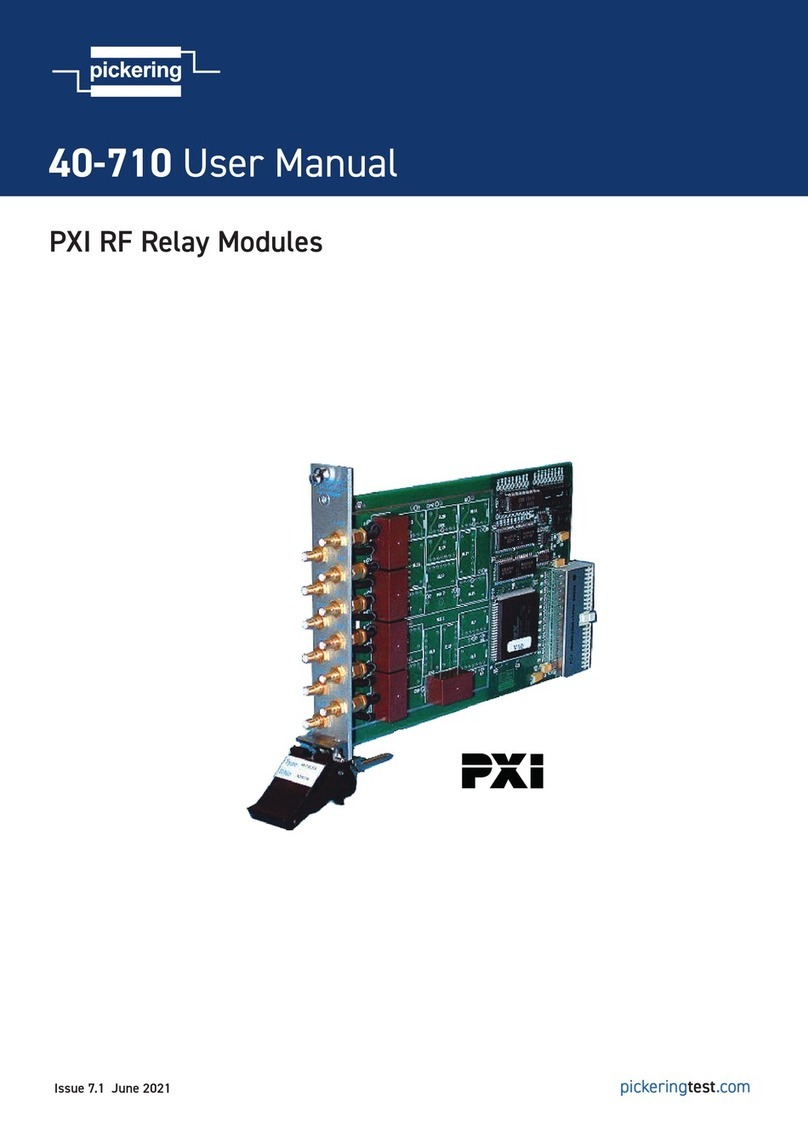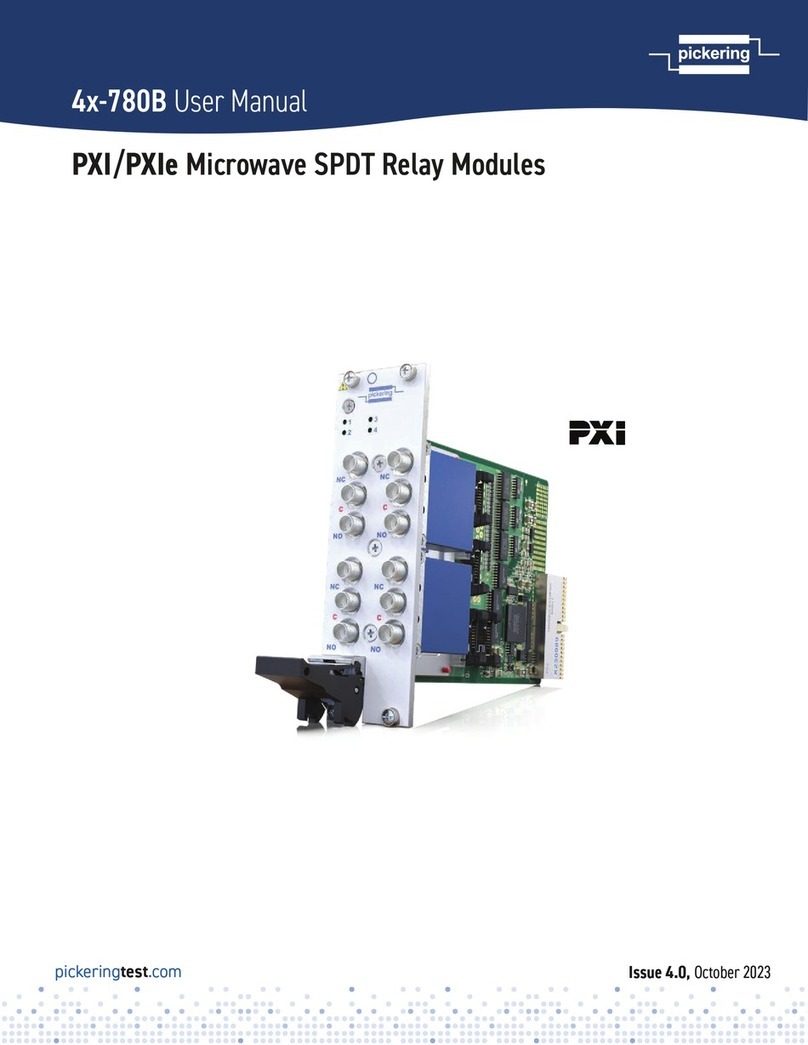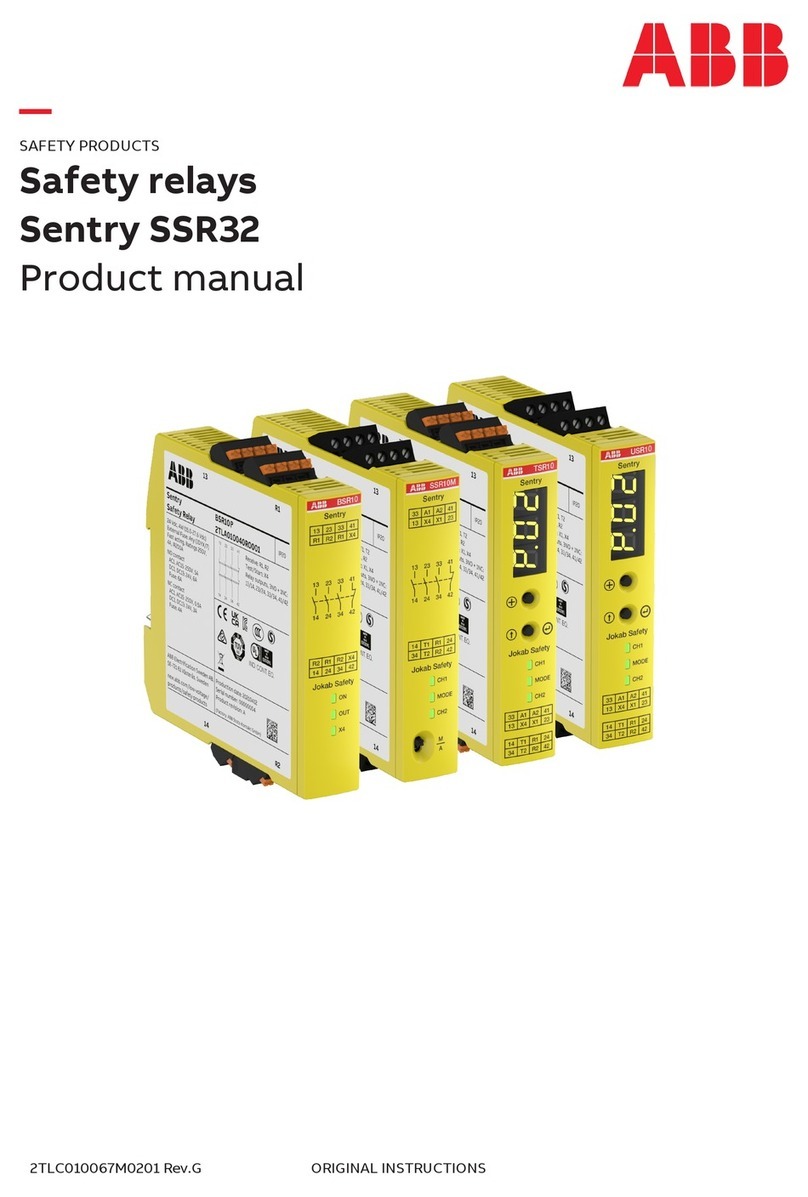
Page 1.2 PXI/PXIe HIGH VOLTAGE POWER RELAY MODULE 40/42-323
pickering
SECTION 1 - TECHNICAL SPECIFICATION
Hardware Interlock
The 40/42-323 modules are fitted with a hardware
interlock. The interlock, when activated, will return all
relays to their default unpowered state (assuming the
switches are fully functional) and also provide error
notification via the software interface. The interlock
feature can be daisy-chained between additional
hardware interlock enabled modules for example to
allow one signal to disable multiple cards. For further
details please refer to the Hardware Interlock section
within the user manual.
100 Ω
+3.3 V
GND
External
Wire Link
Front Panel
Connector
Interlock
Daisy-chain
Interlock
Detection
Circiuitry
Processor Relay Driver(s)
SPI Serial
Comms
Output Enable
SPI Serial
Comms
Output Enable
Drive
Outputs
To
Relays
Interlock Signal Routing Diagram for 40/42-323
Interlock Connector
“Hot” Switching
This is when the load is switched with the high
voltage source applied. Hot switching may generate
considerable RFI, both within the switching module
and on interconnecting wiring. Care must be taken to
suppress or shield all cabling.
Note that any precaution which adds extra capacitance
to a cable should be taken with great care, even a very
small capacitance at high voltages can cause very
large inrush current through the module resulting in
possible switch weld and excessive RFI.
The 40/42-323 includes extensive built-in suppression
circuits that minimize RFI and surge problems.
“Cold” Switching – The Preferred Option for Reliability
& Long Life
With cold switching, the relay is operated before the high voltage
source is applied. In this case the maximum carry current is much
greater, also there will be much less stress on the reed relays,
resulting in improved reliability and life.
Most high voltage sources include a soft start facility which reduces
the likelihood of generating RFI or temporary over-voltage.
High voltage switching modules are often used for isolation testing
applications (e.g. cable, transformer or semiconductor isolation
tests), in these cases, cold switching is nearly always the preferred
option to reduce the risk of high voltage transients that may cause
premature breakdown.
Overview of “Hot” & “Cold” Switching Techniques
40-323-900-HI & 40-323-901-HI PXI High Voltage
Power Relay Modules with Covers
RFI Suppression
The 40/42-323 module includes RFI suppression that extends
relay contact life in hot switching applications and controls
surges caused by high voltage transients in cold switching
applications. The suppressors also ensure the module’s safe
operation when connected to a high voltage source via cable
assemblies that might otherwise generate additional transients
or RFI problems.
The suppression components result in reduced bandwidth and
slightly higher path resistance compared to standard designs
(please refer to the switching specification table).
Please note, it is good practice to keep high voltage switching
modules away from more sensitive units to minimize crosstalk.
40/42-323
pickeringtest.com Page 2
PXI/PXIe SPST High Voltage Power Relay
